
数字图像处理 (Digital Image Processing) 视觉感知基础
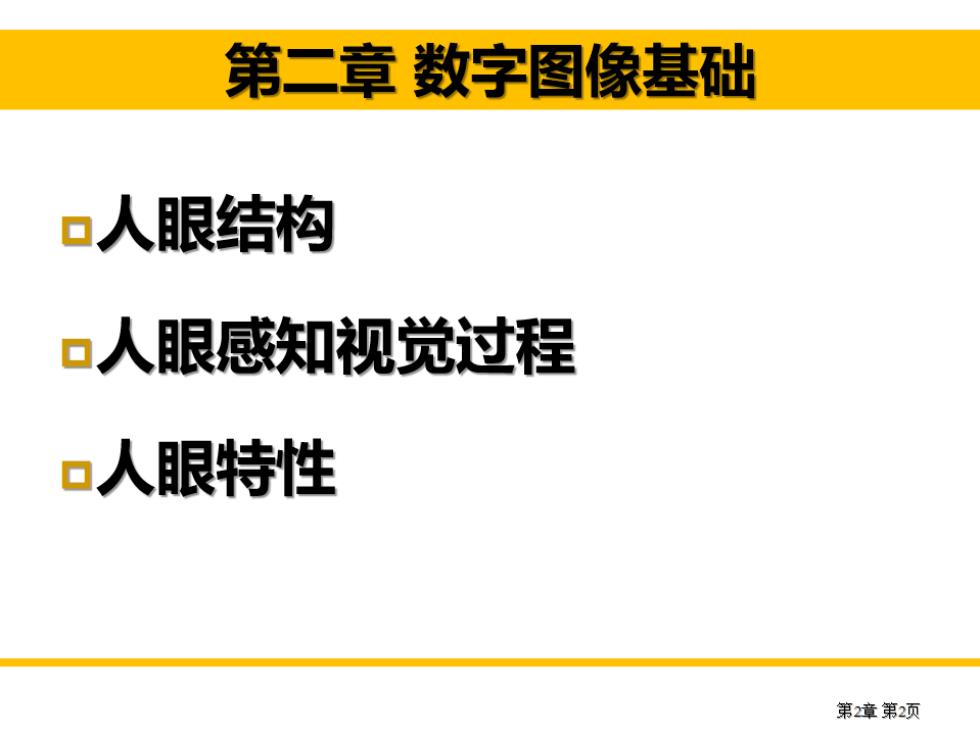
第二章数字图像基础 □人眼结构 □人眼感知视觉过程 □人眼特性 第2章第2页

2.1视觉感知基础 为什么要研究人类视觉? 1)数字图像处理的质量评价多由人眼主观评价: 2) 许多图像处理相关技术要根据人眼特性设计: 如电视图像场频率、屏幕刷新频率、图像量 化级别、立体显示(双目视觉)、图像压缩 3)根据人类认知图像内容的机制可以研究出新 的图像处理算法 第2章第3页

人眼结构 角膜 Iris 虹膜 ■人眼:近似球体,平均直径约 为20mm,眼球壁由三层膜 Ciliary bod Anterior ichamber Ciliary muscle 构成 镜头状体 角膜和巩膜 Ciliary fiber 1. 光轴 2. 脉络膜睫状体虹膜 Visual axis 3. 视网膜 Vitreous hum ■ 眼球内部主要是晶状体和玻 巩膜 盲点 中心凹 璃体 Sclera- Choroid. a。adna8 ■ 眼球分为屈光系统和感光系 脉络膜 统两部分 视神经 ve sheath '.5mm Lens(透镜),lris['aieris](虹膜),Retina[retina]视网膜,Fovea[fauvia]小凹(尤指视网膜的中央凹),cornea[kOnia]角膜,sclera巩膜
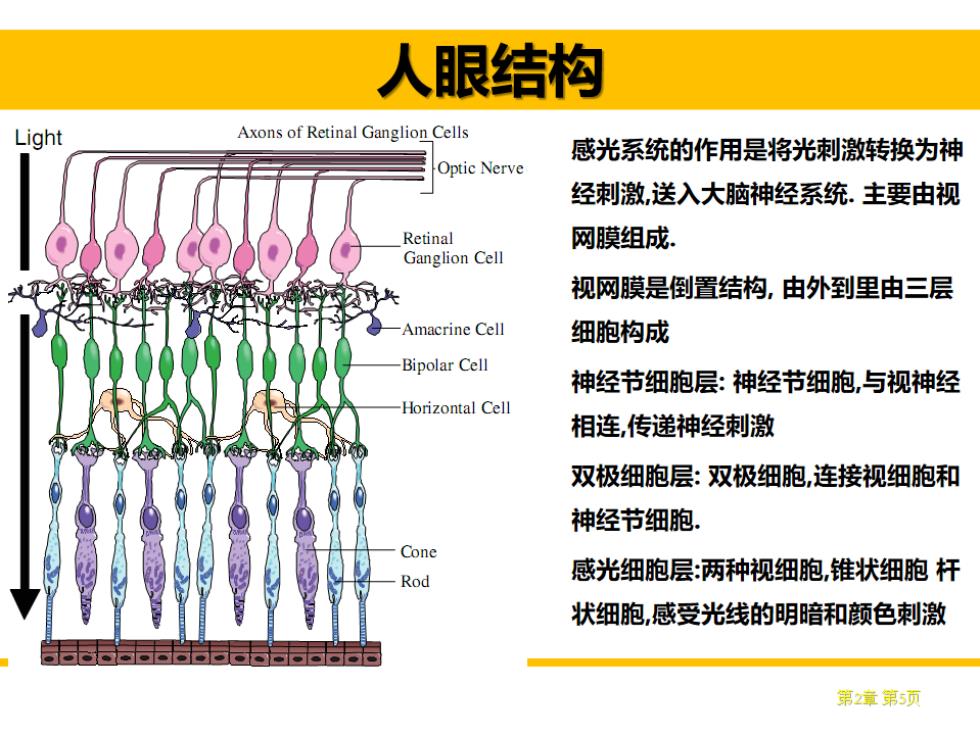
人眼结构 Light Axons of Retinal Ganglion Cells 感光系统的作用是将光刺激转换为神 Optic Nerve 经刺激,送入大脑神经系统.主要由视 Retinal 网膜组成 Ganglion Cell 视网膜是倒置结构,由外到里由三层 -Amacrine Cell 细胞构成 Bipolar Cell 神经节细胞层:神经节细胞,与视神经 Horizontal Cell 相连,传递神经刺激 双极细胞层:双极细胞,连接视细胞和 神经节细胞, Cone Rod 感光细胞层:两种视细胞,锥状细胞杆 : 状细胞,感受光线的明暗和颜色刺激 第章第项
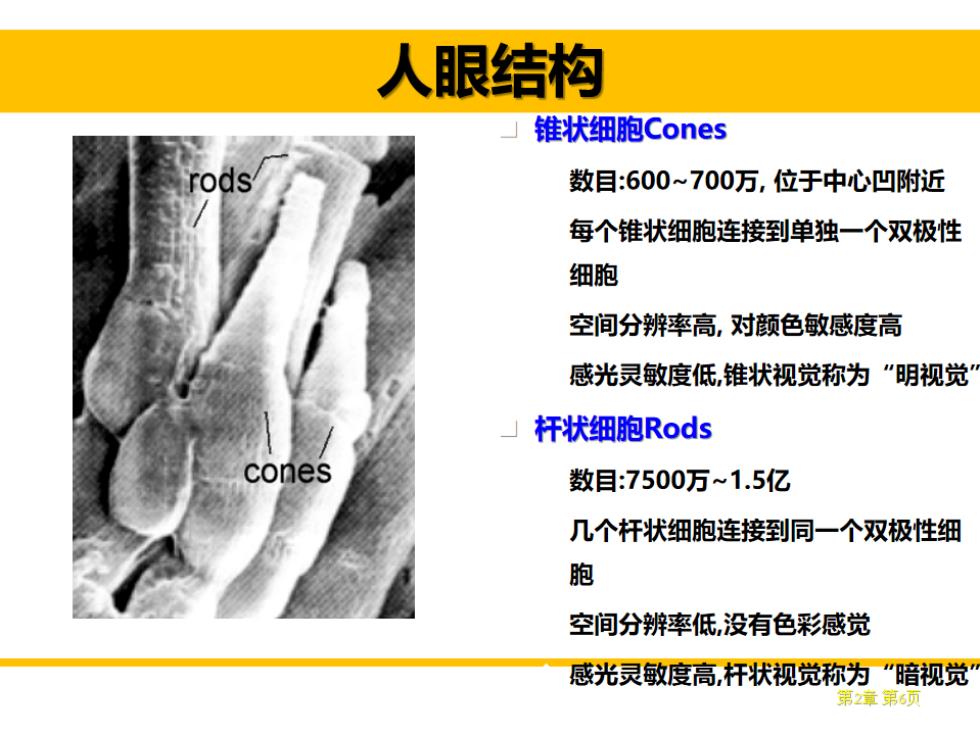
人眼结构 锥状细胞Cones rods 数目:600~700万,位于中心凹附近 每个锥状细胞连接到单独一个双极性 细胞 空间分辨率高,对颜色敏感度高 感光灵敏度低,锥状视觉称为“明视觉' 」杆状细胞Rods cones 数目:7500万~1.5亿 几个杆状细胞连接到同一个双极性细 胞 空间分辨率低,没有色彩感觉 感光灵敏度高,杆状视觉称为“暗视觉 第章第页

Light Adaptation亮度适应
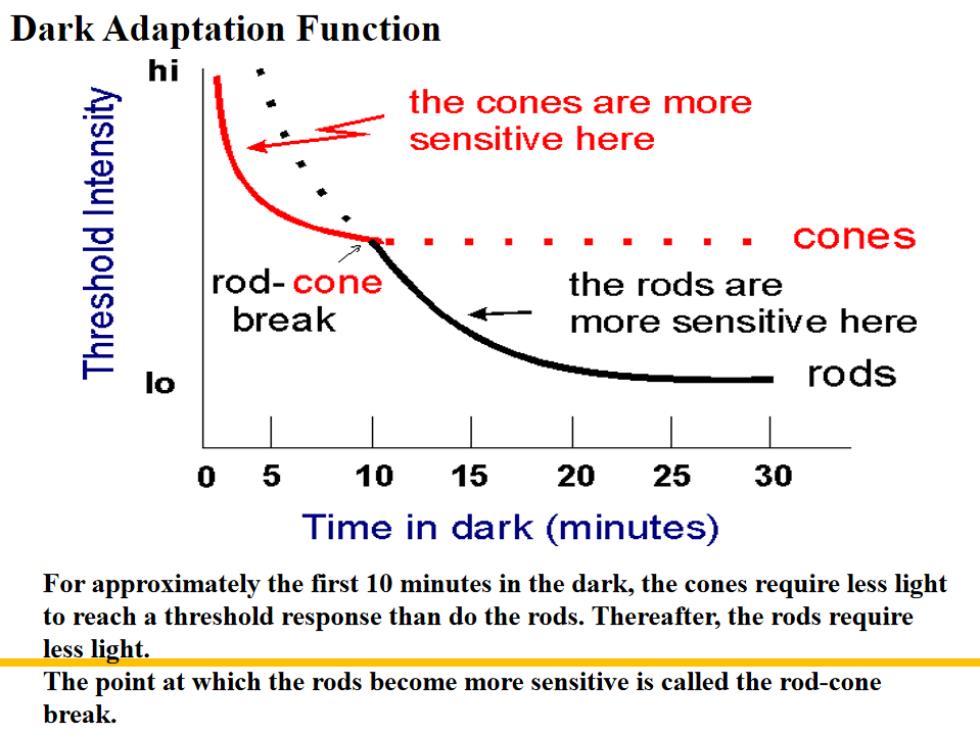
Dark Adaptation Function hi the cones are more sensitive here ....cones rod-cone the rods are break more sensitive here lo rods 0 5 10 15 2025 30 Time in dark (minutes) For approximately the first 10 minutes in the dark,the cones require less light to reach a threshold response than do the rods.Thereafter,the rods require less light. The point at which the rods become more sensitive is called the rod-cone break
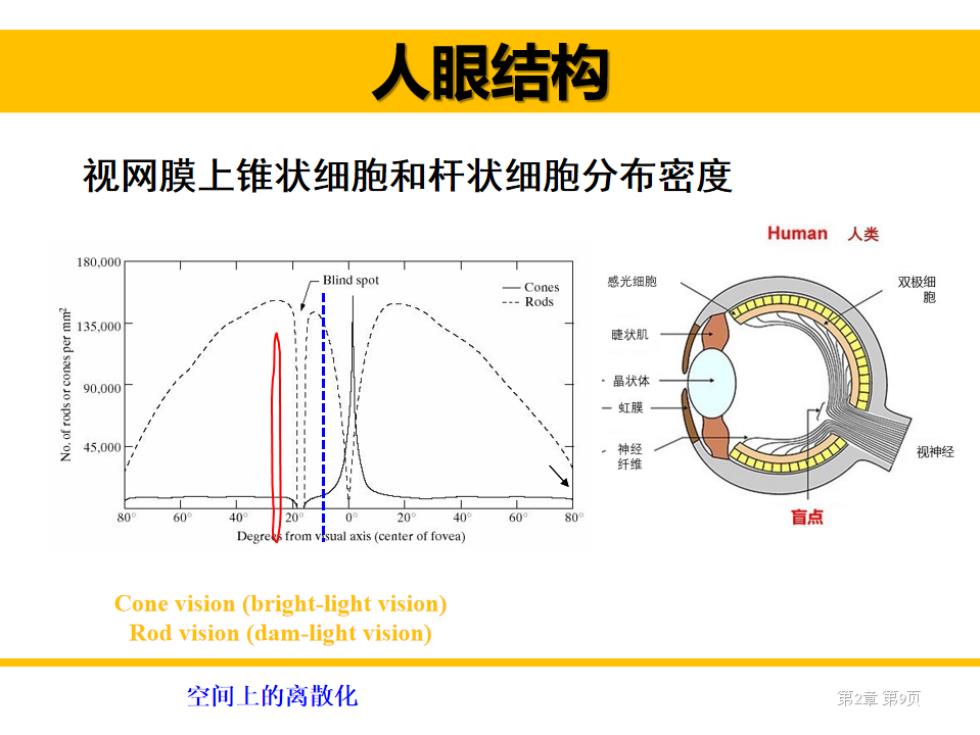
人眼结构 视网膜上锥状细胞和杆状细胞分布密度 Human人类 180.000 Blind spot -Cones 感光细胞 双极细 ---Rods 135.000 睫状肌 90.000 ·晶状体 一虹膜 45.000 神经 视神经 纤维 80 60 40 20 0 20° 40 60 80 盲点 Degreks from visual axis (center of fovea) Cone vision (bright-light vision) Rod vision (dam-light vision) 空间上的离散化 第章第列
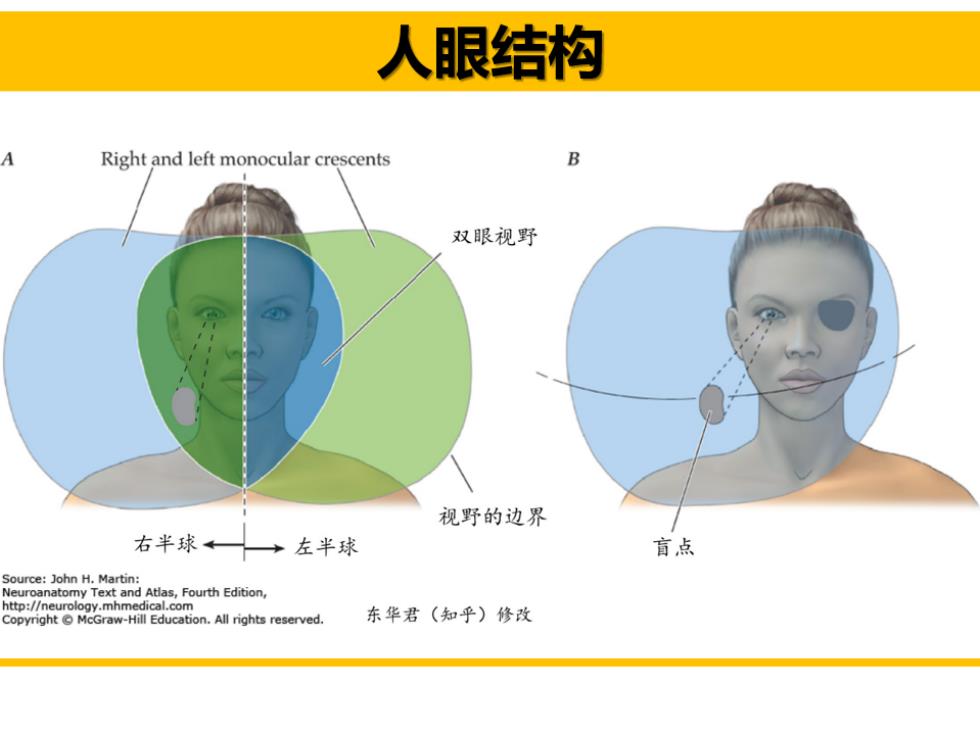
人眼结构 Right and left monocular crescents B 双眼视野 视野的边界 右半球←→左半球 盲点 Source:John H.Martin: anat ttp://n my Textand Atlas,Fourth Edition, oyright McGraw-Hill Education.All rights reser 东华君(知乎)修改